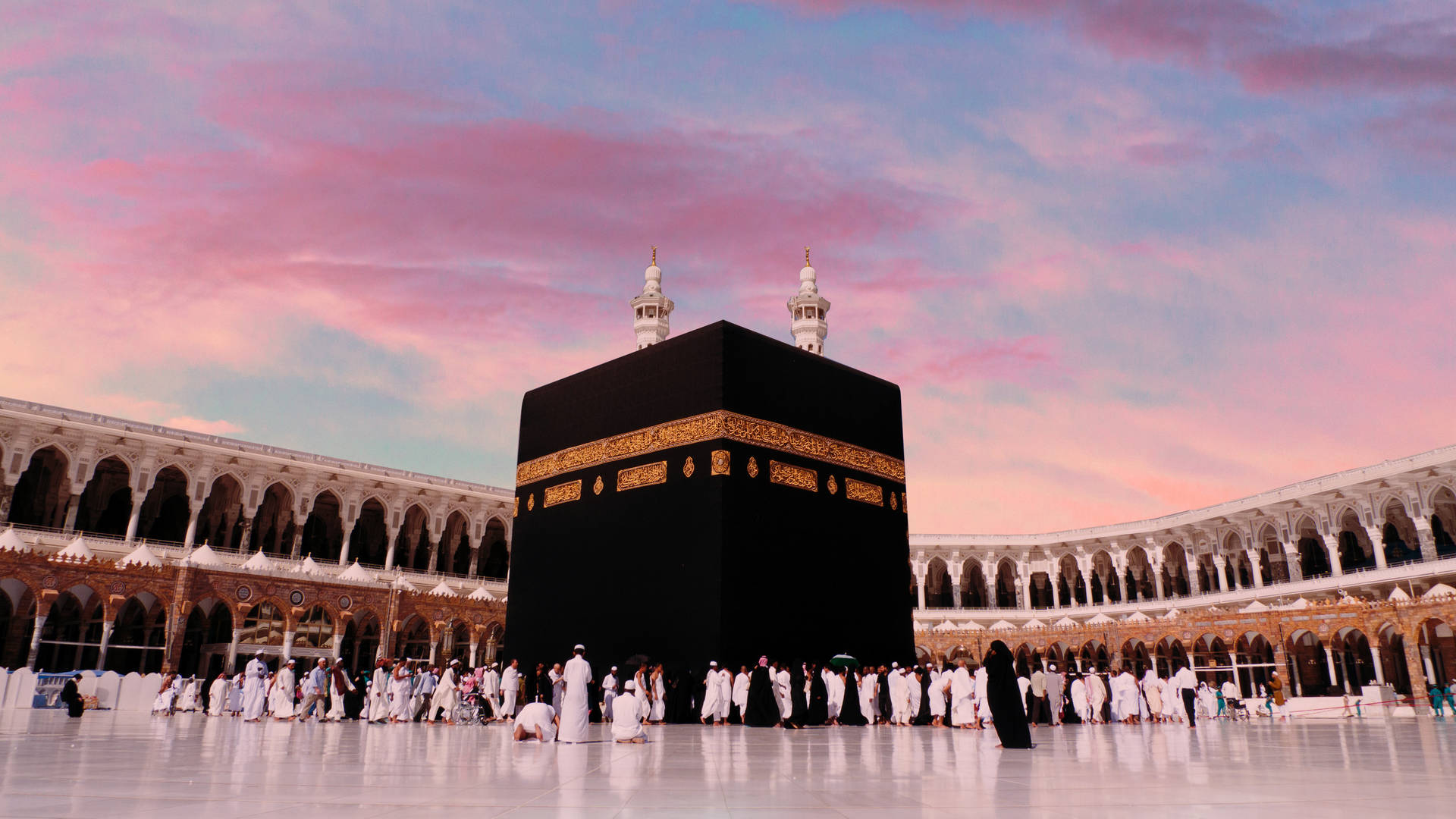Lifestyle
6.27.2023
Inside, veiling, dimensions… Stuff you didn’t know about the holy Kaaba

In modern English, the word “Mecca” is often used metaphorically to describe a central place that attracts a large number of people or a center of an activity. This association stems from the fact that Mecca, located in Saudi Arabia, is the holiest Islamic city in the world and draws millions of pilgrims each year. At the heart of Mecca lies the Kaaba, a structure that holds great significance for Muslims. Here are five things you may not know about it:
The design of the Kaaba
The Kaaba, meaning “cube” in Arabic, stands as a cubical building, approximately 50 feet (15 meters) tall. Its base measures about 35 by 40 feet (10 by 12 meters). Constructed using grey stone and marble, the Kaaba is positioned so that its corners roughly align with the cardinal directions. Muslims orient themselves toward this sacred site during their daily prayers. Inside the Kaaba, the design is fairly unassuming, with only three pillars supporting the roof. Hanging from the ceiling are silver and gold lamps, incorporating a minimalistic design that reflects Islam’s emphasis on sobriety.
The veiling
For most of the year, the Kaaba is covered by a black brocade cloth known as the kiswah. This massive cloth, woven with threads of silver and gold is replaced annually on the second day of Hajj, the Islamic pilgrimage that attracts millions of faithful from around the world.
In Islam, Hajj is the annual pilgrimage made to the Kaaba, the ‘House of God’ in the city of Mecca. The Kaaba is covered in a Kiswah — a black silk cloth, exquisitely embroidered in gold
Every year, artisans work on creating a new Kiswah
A thread on the art of making the Kiswah pic.twitter.com/dU65T1YnHN
— Bayt Al Fann (@BaytAlFann) June 26, 2023
The Black Stone
One of the notable features within the Kaaba is the Black Stone, located in the eastern corner. Encircled by a protective ring of stone and held together by a heavy silver band, this sacred stone is believed to have descended from heaven during the time of Adam and Eve. Islamic tradition holds that the Prophet Muhammad kissed the stone, establishing a precedent for pilgrims who aspire to follow in his footsteps. Over time, the stone turned black, purportedly due to absorbing the sins of the countless pilgrims who have touched and kissed it.

The Black Stone of the Kaaba. (@HolyKabaa)
Rebuilding and renovations
Throughout history, the Kaaba has undergone multiple reconstructions and renovations. Natural disasters like floods and fires, as well as human interventions, have necessitated its rebuilding. The most recent significant renovation took place in 1996, initiated by Saudi authorities to expand and enhance the structure to accommodate the growing number of pilgrims.
Voir cette publication sur Instagram
Historical significance
According to Muslim tradition, the origins of the Kaaba can be traced back to Abraham, who built the original structure with his son Ishmael. However, before the advent of Islam, the Kaaba served as a temple for polytheistic religious practices in the Arabian Peninsula. The sanctuary housed numerous idols representing pre-Islamic Arab deities such as Al Lat, al-Uzza and Manat. However, with the advent of Islam, the prophet Mohammed spearheaded the elimination of these idols, purging the Kaaba for the exclusive worship of Allah, the one true God in the Muslim religion.
Voir cette publication sur Instagram
popular

